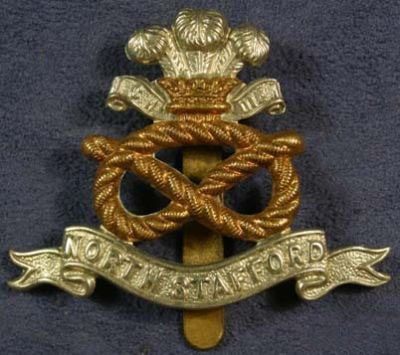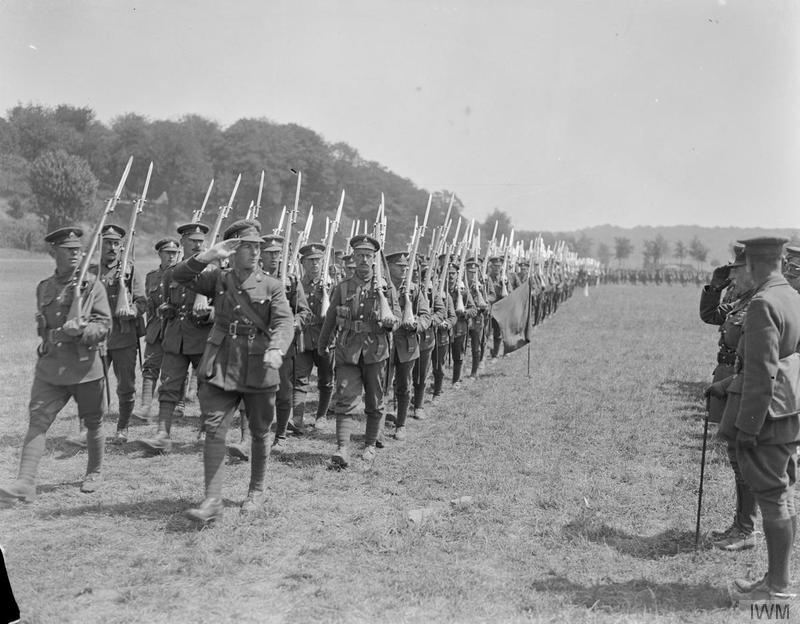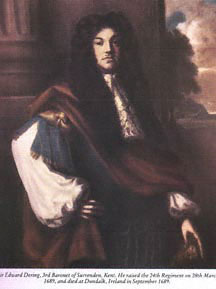|
Lincolnshire County Division
The Lincolnshire County Division was a short-lived formation of the British Army, formed in the Second World War. The headquarters were formed on 24 February 1941, becoming operational on 27 March. It ceased to function on 25 November and was disbanded on 3 December. Its commanding officer was Major-General Arthur Kenneth Hay,Joslen p113 and it was an infantry only formation consisting of three Independent Infantry Brigades (Home). Combat support, artillery, engineers etc., would be provided by other local formations. It was commanded by I Corps Order of Battle All brigades were part of the division from 27 March to late November 1941. * 204th Independent Infantry Brigade (Home) ** 6th Battalion, The King's Shropshire Light Infantry ** 7th Battalion, The South Lancashire Regiment ''(left 31 May 1941)'' ** 8th Battalion, The South Lancashire Regiment ** 12th Battalion, The Sherwood Foresters ''(left 31 August 1941)'' Redesignated the 204th Independent Infantry Brigade with ... [...More Info...] [...Related Items...] OR: [Wikipedia] [Google] [Baidu] |
Divisional Insignia Of The British Army
Formation signs at the division level were first introduced in the British Army in the First World War. They were intended (initially) as a security measure to avoid displaying the division's designation in the clear. They were used on vehicles, sign posts and notice boards and were increasingly, but not universally, worn on uniform as the War progressed. Discontinued by the regular army after 1918, only a few Territorial divisions continued to wear them before 1939. Reintroduced officially in late 1940 in the Second World War, divisional formation signs were much more prevalent on uniforms and were taken up by many other formations, independent brigades, corps, armies, overseas and home commands, military districts and lines of communication areas. The sign could be based on many things, geometry (simple or more complex), heraldry, regional or historical associations, a pun, the role of the division or a combination. First World War Until 1916, unit names were written on vehicl ... [...More Info...] [...Related Items...] OR: [Wikipedia] [Google] [Baidu] |
8th Battalion, North Staffordshire Regiment (1940–42)
The 180th Field Regiment was a unit of the Royal Artillery, formed by the British Army during World War II. First raised in 1940 as infantry of the North Staffordshire Regiment, it was converted to the field artillery role in 1942, serving as a reserve unit in Home Defence. It was disbanded before the end of the war. 8th North Staffordshire Regiment In July 1940, shortly after the British Expeditionary Force was evacuated from Dunkirk, the North Staffordshire Regiment formed a new 8th Battalion. (A previous 8th (Service) Battalion had been raised as part of Kitchener's Army during World War I of 1914–18.)Frederick, p. 313. After initial training, the battalion joined a hone defence formation, 205th Independent Infantry Brigade (Home), when that was formed by No 5 Infantry Training Group on 10 October 1940. After briefly serving under 1st Infantry Division, the brigade was assigned to the North Midland Area command. It joined Lincolnshire County Division when that became op ... [...More Info...] [...Related Items...] OR: [Wikipedia] [Google] [Baidu] |
Military Units And Formations Established In 1941
A military, also known collectively as armed forces, is a heavily armed, highly organized force primarily intended for warfare. It is typically authorized and maintained by a sovereign state, with its members identifiable by their distinct military uniform. It may consist of one or more military branches such as an army, navy, air force, space force, marines, or coast guard. The main task of the military is usually defined as defence of the state and its interests against external armed threats. In broad usage, the terms ''armed forces'' and ''military'' are often treated as synonymous, although in technical usage a distinction is sometimes made in which a country's armed forces may include both its military and other paramilitary forces. There are various forms of irregular military forces, not belonging to a recognized state; though they share many attributes with regular military forces, they are less often referred to as simply ''military''. A nation's military may f ... [...More Info...] [...Related Items...] OR: [Wikipedia] [Google] [Baidu] |
British County Divisions
The British County Divisions of the Second World War were raised by the British Army in 1941 as a defence against a planned German invasion of Britain. They were static formations which were supposed to command the Independent Infantry Brigades (Home) which were on anti-invasion duties. Each coast in danger had its own County Division. * Devon and Cornwall County Division * Dorset County Division * Durham and North Riding County Division * Essex County Division (formerly the West Sussex County Division) * Hampshire County Division * Lincolnshire County Division * Norfolk County Division * Northumberland County Division * West Sussex County Division (later, the Essex County Division) * Yorkshire County Division The Yorkshire County Division was a formation of the British Army in the Second World War, its headquarters were formed on 24 February 1941, and became operation on 19 March. It was commanded by three officers, Major-General the Hon E. F. Lawso ... These formations had ... [...More Info...] [...Related Items...] OR: [Wikipedia] [Google] [Baidu] |
HMSO
The Office of Public Sector Information (OPSI) is the body responsible for the operation of His Majesty's Stationery Office (HMSO) and of other public information services of the United Kingdom. The OPSI is part of the National Archives of the United Kingdom and is responsible for Crown copyright. The OPSI announced on 21 June 2006 that it was merging with the National Archives. The merger took place in October 2006. The OPSI continues to discharge its roles and responsibilities from within the structure of the National Archives. Controller of HMSO and Director of OPSI The Controller of HMSO is also the Director of OPSI. HMSO continues to operate from within the expanded remit of OPSI. The Controller of HMSO also holds the offices of Kings's Printer of Acts of Parliament, King's Printer for Scotland and Government Printer for Northern Ireland. By virtue of holding these offices OPSI publishes, through HMSO, the '' London Gazette'', ''Edinburgh Gazette'', ''Belfast Gazette'' ... [...More Info...] [...Related Items...] OR: [Wikipedia] [Google] [Baidu] |
List Of British Divisions In World War II
During the Second World War, the basic tactical formation used by the majority of combatants was the division. It was a self-contained formation that possessed all the required forces for combat, which was supplemented by its own artillery, engineers, communications and supply units. On 3 September 1939, at the start of the war, the United Kingdom had 2 armoured, 24 infantry and 7 anti-aircraft divisions. The anti-aircraft divisions were not comparable in role to formations that were intended for combat such as infantry divisions. In September, the British Army stated that 55 divisions (a mix of armoured, infantry and cavalry) would be raised to combat Germany. The United Kingdom would provide 32 of these formations and the remainder would be raised by the Dominions and India. In 1941, this goal was adjusted to 57 divisions, with the United Kingdom to provide 36. By the end of 1941, the United Kingdom had met its quota. During the war, 85 divisional formations were raised but ... [...More Info...] [...Related Items...] OR: [Wikipedia] [Google] [Baidu] |
54th (East Anglian) Infantry Division
The 54th (East Anglian) Infantry Division was an infantry division of the British Army. The division was raised in 1908 following the creation of the Territorial Force (TF) as the East Anglian Division. During the First World War the division fought at Gallipoli and in the Middle East. The division was disbanded after the war but reformed in the Territorial Army in 1920. During the Second World War it was a home service division and did not see any combat service abroad and was disbanded in late 1943 but many of its component units went to see service in the Normandy Campaign and North-western Europe from June 1944 to May 1945. Formation The Territorial Force (TF) was formed on 1 April 1908 following the enactment of the Territorial and Reserve Forces Act 1907 (7 Edw.7, c.9) which combined and re-organised the old Volunteer Force, the Honourable Artillery Company and the Yeomanry. On formation, the TF contained 14 infantry divisions and 14 mounted yeomanry brigades. One of ... [...More Info...] [...Related Items...] OR: [Wikipedia] [Google] [Baidu] |
The Welch Regiment
The Welch Regiment (or "The Welch", an archaic spelling of "Welsh") was an infantry regiment of the line of the British Army in existence from 1881 until 1969. The regiment was created in 1881 under the Childers Reforms by the amalgamation of the 41st (Welch) Regiment of Foot and 69th (South Lincolnshire) Regiment of Foot to form the Welsh Regiment, by which it was known until 1920 when it was renamed the Welch Regiment. In 1969 the regiment was amalgamated with the South Wales Borderers to form the Royal Regiment of Wales. History Formation The regiment was created in 1881 under the Childers Reforms by the amalgamation of the 41st (Welch) Regiment of Foot and 69th (South Lincolnshire) Regiment of Foot to form the Welsh Regiment. The 1st Battalion moved to Egypt in 1886. The battalion took part in the Battle of Suakin in December 1888 during the Mahdist War under the leadership of the force commander, Colonel Herbert Kitchener, who wrote in his dispatches: The 1st Battali ... [...More Info...] [...Related Items...] OR: [Wikipedia] [Google] [Baidu] |
The Gloucestershire Regiment
The Gloucestershire Regiment, commonly referred to as the Glosters, was a line infantry regiment of the British Army from 1881 until 1994. It traced its origins to Colonel Gibson's Regiment of Foot, which was raised in 1694 and later became the 28th (North Gloucestershire) Regiment of Foot. The regiment was formed by the merger of the 28th Regiment with the 61st (South Gloucestershire) Regiment of Foot. It inherited the unique distinction in the British Army of wearing a badge on the back of its headdress as well as the front, a tradition that originated with the 28th Regiment after it fought in two ranks back to back at the Battle of Alexandria in 1801. At its formation the regiment comprised two regular, two militia and two volunteer battalions, and saw its first action during the Second Boer War. Before the First World War, the regiment's four auxiliary battalions were converted to three Territorial Force battalions and a Special Reserve battalion, and a further 18 battalion ... [...More Info...] [...Related Items...] OR: [Wikipedia] [Google] [Baidu] |
The Royal Sussex Regiment
The Royal Sussex Regiment was a line infantry regiment of the British Army that was in existence from 1881 to 1966. The regiment was formed in 1881 as part of the Childers Reforms by the amalgamation of the 35th (Royal Sussex) Regiment of Foot and the 107th Regiment of Foot (Bengal Light Infantry). The regiment saw service in the Second Boer War, and both World War I and World War II. On 31 December 1966, the Royal Sussex Regiment was amalgamated with the other regiments of the Home Counties Brigade – the Queen's Royal Surrey Regiment, the Queen's Own Buffs, The Royal Kent Regiment, and the Middlesex Regiment (Duke of Cambridge's Own) – to form the Queen's Regiment; which was later, on 9 September 1992, amalgamated with the Royal Hampshire Regiment to form the present Princess of Wales's Royal Regiment (Queen's and Royal Hampshires). History 1881–1914 The regiment was formed in 1881 as part of the Childers Reforms by the amalgamation of the 35th (Royal Sussex) Regimen ... [...More Info...] [...Related Items...] OR: [Wikipedia] [Google] [Baidu] |
The South Wales Borderers
The South Wales Borderers was a line infantry regiment of the British Army in existence for 280 years. It came into existence in England in 1689, as Sir Edward Dering's Regiment of Foot, and afterwards had a variety of names and headquarters. In 1782, it became the 24th Regiment of Foot, and had its depot in Warwickshire. Based at Brecon from 1873, the regiment recruited from the border counties of Brecknockshire, Monmouthshire, and Herefordshire. It was not called the South Wales Borderers until the Childers Reforms of 1881. The regiment served in a great many conflicts, including the American War of Independence, various conflicts in India, the Zulu War, Second Boer War, and World War I and World War II. In 1969 the regiment was amalgamated with the Welch Regiment to form the Royal Regiment of Wales. History Early history The regiment was formed by Sir Edward Dering, 3rd Baronet as Sir Edward Dering's Regiment of Foot in 1689, becoming known, like other regiments, by ... [...More Info...] [...Related Items...] OR: [Wikipedia] [Google] [Baidu] |
212th Brigade (United Kingdom)
The 212th Brigade was a Home Service formation of the British Army during the First and the Second World Wars. First World War The 212th Brigade was part of the 71st Division, a Home Service division raised in late 1916. It had the dual role of training men for overseas drafts and providing forces for home defence. The brigade was previously known as the 6th Provisional Brigade. Order of Battle The following infantry battalions served in the brigade: *61st Provisional Battalion, became 11th Battalion, Norfolk Regiment *100th Provisional Battalion, became 29th (City of London) Battalion, London Regiment *101st Provisional Battalion, became 30th (City of London) Battalion, London Regiment *249th Graduated Battalion, became 51st (Graduated) Battalion, Bedfordshire Regiment *250th Graduated Battalion, became 52nd (Graduated) Battalion, Middlesex Regiment On 10 January 1918 orders were issued to break up 71st Division. Disbandment began in January 1918 and its last elements disapp ... [...More Info...] [...Related Items...] OR: [Wikipedia] [Google] [Baidu] |




